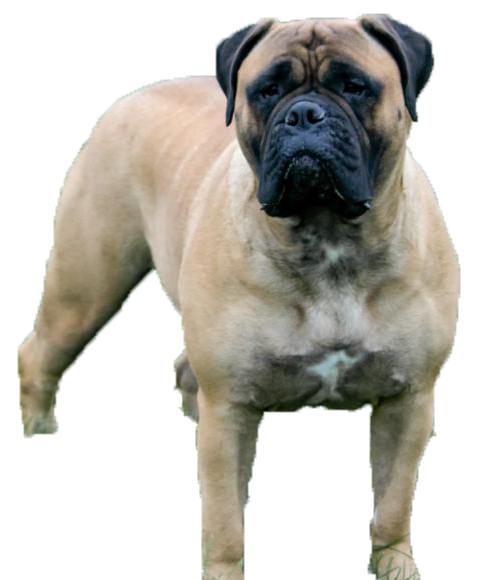
Are you looking for a dog that watches your property by the night?
At Iowa Bullmastiffs, we bring you the most famed night dog – bullmastiff. The dog is not just agile and strong, but aslo extremely courageous. The sheer size of the dog makes them look like a part of your family. Having a bullmastiff dog will ensure that you are protected by night because of its unmatched traits.
Bullmastiffs were initially found in England in the 1860s. The dog was meant to assist gamekeepers in guarding off poachers. The foundation stock of this breed was created with a mixture of 60% old English Mastiff, for its courage and size, and 40% old English Bulldog for its strength and agility.
Own a bullmastiff now!
Gamekeepers’ Assistant
A bullmastiff is a gamekeepers’ favorite assistant. The ability of the dogs to chase and immobilize poacher on the estates is what that made them famous. A bullmastiff is known for its speed, strength, and, endurance.
The dogs chase and capture intruders without mauling or killing them. To be specific, bullmastiff dogs of dark brindle color are preferred for work at night. These dogs are referred to as ‘night Dog’ or ‘the gamekeepers’ night dog’.
Bullmastiff was acknowledged by English Kennel Club as a purebred dog in 1924. It was not until October of 1933 that they were recognized by the American Kennel Club.
Bullmastiff Standards
A bullmastiff dog is large and is known for its courageous nature. These dogs are great as a family pet. They are obedient and tolerate children playing with them. You can also make a bullmastiff socialize with other pets if trained well.
However, due to the nature of a bullmastiff, it is easy for it to dominate other pets. It’s easy for you to teach and discipline your dog. The dog has a high learning rate, and it is obedient while following instructions.
Size
A male bullmastiff dog is between 25 to 27 inches at the withers, and weighs between 110 to 130 pounds in weight. Female bullmastiff is a little light-weighted and short. A female dog grows between 24 to 26 inches at the withers and weighs 90 to 120 pounds.
Proportion
The bullmastiff appears proportionate, resembling a square shape. The length from the tip of breastbone, to the rear of thigh, exceeds the height from withers to ground only slightly, resulting in a nearly square appearance.
Colors
A bullmastiff is in various shades of brindle, fawn, red fawn, or red with a black muzzle. There are slight white markings on the chest. However, white marking on the chest is considered as a fault as it marks them as impure.
Coat
The short coat of a bullmastiff enables it to have the least grooming. The coat also acts as a good weather protection with short hard hair that feels smooth and dense, lying flat on the body.

Bite
An original bullmastiff does not show its bottom teeth when the mouth is closed. The canine teeth are large and are set wide apart.
Neck & Topline
A bullmastiff has a well-arched neck. It is moderate in length and shows its muscular nature. The size is almost equal to the skull in circumference. Its top line is straight and levels between withers and loin.
Body & Back
The bullmastiff is compact. Its chest is wide and deep, with ribs well sprung and well that set down between the forelegs. The back is short, giving the impression of a well-balanced dog.
Hindquarters
Hind legs are strong and muscular with well-developed second thighs. It denotes power and agility. The legs are not cumbersome. The hocks are moderately bent. It is advised to watch out for cow hocks and splay feet as such features are highly undesirable. If a bullmastiff has dark toenails, it is a sign of a pure breed.
Tail
A bullmastiff tail is set high. The tail is strong at the root and always tapers, reaching to hocks. The tail is straight but not curved, never like a hound.
Gait
The gait of a bullmastiff is free, smooth, and powerful. When viewed from the side, it reaches and drives maximum use of the dog's moderate angulation. The back remains level and firm. The dog moves in a straight line. The feet tend to converge under the body, without crossing over, as speed increases. There is no twisting in or out at the joints.
Temperament
A bullmastiff is attentive, loyal, gentle, and loving. It is fearless and confident yet docile. The dog combines reliability, intelligence, and willingness to please when required.
Guard-dog
The unique quality of a bullmastiff is its guarding abilities. It is excellent as a bodyguard and a natural guard-dog to the family and home. It is dependable and is considered as a family companion and protector.
Care and Exercise
Maintaining a bullmastiff dog is easy as the coat requires less brushing. The nails should be kept short. Bullmastiffs need daily walks or a large yard to run in. Diet and daily exercise need to be balanced for good health.
Training
A bullmastiff is obedient if trained at a young age. However, bullmastiffs can be a stubborn breed, resistant to obedience, training, and can be overly protective of their human families. They must be properly socialized to strangers and other dogs.
Living Environment
A large fenced backyard or the country is preferred for a bullmastiff to live and rest. An owner of a bullmastiff must be a strong, easygoing, and confident leader. Bullmastiffs usually prefer outdoors than indoors.
Health Issues
The most common health issues are gastric torsion and sometimes cancer. A bullmastiff can also get an affected from hip dysplasia.
Litter Size & Registries
A bullmastiff’s litter size is 5 – 8. The breed originates from Great Britain. A bullmastiff is usually registered with the American Kennel Club, Australian National Kennel Council, Canadian Kennel Club, Federation Cynologique Internationale (Group 2), Kennel Club (GB), and United Kennel Club.

